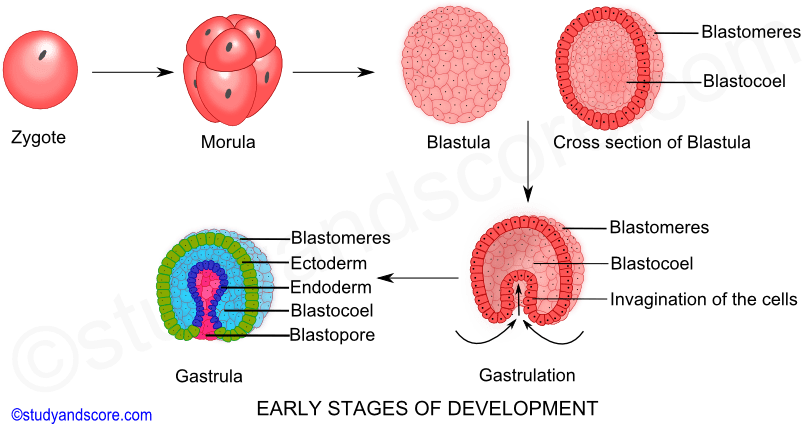

Mesendoderm internalization via a blastopore brings the mesendoderm beneath the surface ectoderm and is the defining and conserved movement of gastrulation ( Fig. Lilianna Solnica-Krezel, in Current Topics in Developmental Biology, 2020 4.5 Mesendoderm internalization Experimental removal of the node in avian embryos results in complete absence of the notochord and a failure of neurulation. The primitive node has been recorded in all stage 7 human embryos it produces axial cell populations, the prechordal plate, notochord, embryonic endoderm and the medial halves of the somites.

Cells ingressing from the ridge pass into the primitive pit (the most rostral part of the primitive groove), and then migrate rostrally beneath the epiblast. It appears as a curved ridge of cells similar in shape to the top of an old-fashioned keyhole. The primitive node, or Hensen’s node, is the most rostral region of the primitive streak. The process by which cells become part of the streak and then migrate away from it beneath the epiblast is termed ingression and is an example of epithelial to mesenchymal transformation.

The lower midline portion of the streak is termed the primitive groove. Streak formation is associated with the local production of several cell layers, extensive disruption of the epiblast basal lamina: increase in adhesive plaques and gap junctions synthesis of vimentin and loss of cytokeratins by the emerging cells.Īs the epiblast cells proliferate, two ridges are formed on each side of the primitive streak, which appears to sink between them. The primitive streak similarly may be considered analogous to the coapted, or fused, lateral lips of the blastopore, and the cloacal membrane and its immediate environs are considered analogous to the ventral lip of the blastopore.Īt the primitive streak, epiblast cells undergo a period of intense proliferation, the rate of division being much faster than that of blastomeres during cleavage. Experiments clearly show the lip of the blastopore to be a dynamic wave front on which cells are carried into the interior to form the roof of the archenteron, a situation analogous to ingression through the node of the prechordal plate and endoderm. amphibia), with the nodal region corresponding to the dorsal lip. The primitive streak may be considered to be generally homologous with the blastopore of lower vertebrates (e.g. Thus, the streak extends half way along the disc in the stage 6 embryo, reaching its greatest relative length in stage 7 and its maximum length in stage 8.įormation of the primitive streak is induced by the underlying visceral hypoblast, which remains beneath the streak even at later stages. The relative dimensions of the primitive streak and the fates of the cells that pass through it change with the developmental stage. With the development of the streak, the terms medial and lateral can be used. Although the future rostral (cranial) and caudal regions of the embryo are well within the boundaries of the embryonic disc, it has become the practice to term the region of the disc closest to the streak ‘caudal’, and the region of the disc furthest from the streak ‘rostral’. At this stage the primitive streak is first seen in the caudal region of the embryonic disc as a collection of pluripotent cells, orientated along its long axis in the median position and conferring the future craniocaudal axis of the embryo ( Figs 10.1– 10.2). Seen from the dorsal (epiblastic) aspect at stage 6, the embryonic disc appears elongated. Susan Standring MBE, PhD, DSc, FKC, Hon FAS, Hon FRCS, in Gray's Anatomy, 2021 Primitive streak and node


 0 kommentar(er)
0 kommentar(er)
